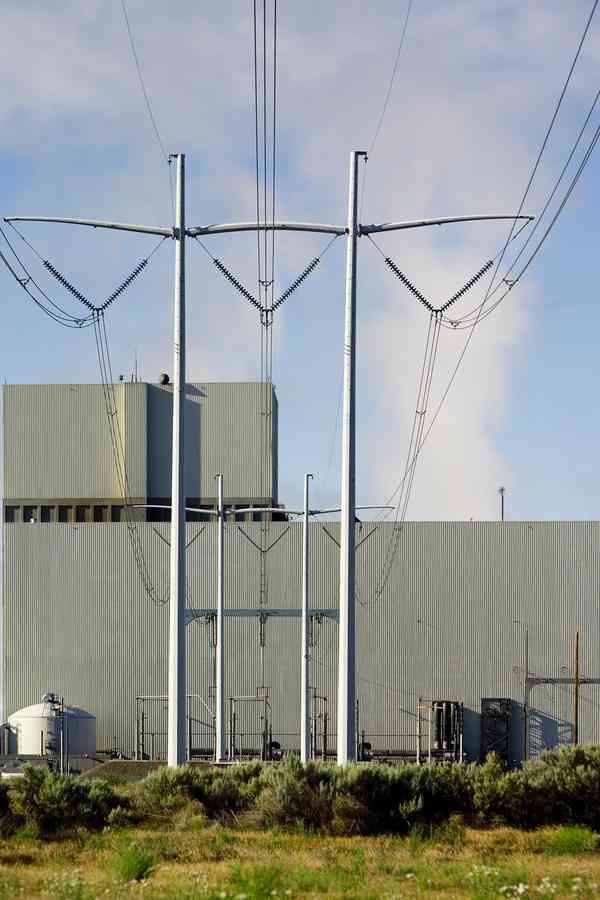forum
library
tutorial
contact

4 Things to Know About the
Columbia Generating Station Lawsuit
by Courtney Flatt
Oregon Public Broadcasting, October 30, 2014
|
the film forum library tutorial contact |

|
4 Things to Know About the
by Courtney Flatt
|
 RICHLAND, Wash. -- Three environmental groups say the Northwest's only commercial nuclear power plant is harming fish. The groups are suing a Washington state agency because they say it issued a permit that violates the Clean Water Act.
RICHLAND, Wash. -- Three environmental groups say the Northwest's only commercial nuclear power plant is harming fish. The groups are suing a Washington state agency because they say it issued a permit that violates the Clean Water Act.
Northwest Environmental Advocates, Northwest Environmental Defense Center, and the Columbia Riverkeeper say Energy Northwest's Columbia Generating Station is discharging toxic material into the Columbia River at a rate that's above state standards. The groups are suing the Washington Energy Facility Site Evaluation Council, which granted the permit.
The lawsuit also says the power plant harms fish when it sucks about 24 million gallons of water per day, or 17,000 gallons per minute, out of the Columbia River and into a cooling system.
Here are four things to know about the lawsuit:
The National Marine Fisheries Service has asked that Energy Northwest upgrade its cooling intake system to better protect fish. The service asked the permitting agency to not renew Energy Northwest's permit for the Columbia Generating Station.
The service has a manual that recommends the best ways to protect migrating salmon and steelhead. From one of the letters:
"NMFS has extensive experience in fish exclusion and passage systems, has evaluated the CGS intake screen designs and supporting studies, and has determined that they are notably out-of-date and would likely harm some of the juvenile salmon that encounter them."
The Columbia Generating Station's intake system was designed and constructed in the late 1970s.
"The state agencies completely ignored [the federal experts'] advice. That's a huge shortfall in EFSEC's decision in issuing this permit," said Lauren Goldberg, a staff attorney for Columbia Riverkeeper.
This area of the Columbia River, known as Hanford Reach, is the primary spawning ground for the basin's summer and fall chinook salmon.
Energy Northwest uses water from the Columbia River to cool the Columbia Generating Station as it produces power.
The generating station withdraws water from the Columbia River through two perforated pipes.
The water is continuously re-circulated through six cooling towers that cool down the equipment used in the production process.
That water does not come into contact with the equipment, but Energy Northwest does add chemicals to the process to prevent corrosion and things growing in the system.
Most of the water evaporates from the system. Some of it is released back into the river.
"The cooling water discharge mixes with river water. The cooling water discharge to the river is authorized and strictly controlled by the permit. The permit includes conditions that ensure the discharge will meet the surface water quality standards. Water quality standards are designed to protect existing water quality and preserve the beneficial uses of surface waters," said John Dobken, an Energy Northwest spokesman.
As a result of the cooling process, the Columbia Generating Station discharges small amounts of toxic material into the Columbia River. Environmental groups say it doesn't matter that these amounts are small – they accumulate in fish that people eat.
"The only way to clean up the fish is to start restricting the amount of pollution that's discharged, particularly from regulated sources that have discharge permits, such as this plant," said Nina Bell, the executive director of Northwest Environmental Advocates.
The environmental groups say Energy Northwest is allowed to discharge too much of these pollutants into the Columbia River. They're seeking to lower the limits set by the permit.
Bell said that there are other sources of heavy metals discharging in the river, as well as heavy metals that are there naturally.
"When you have a river that's already over-contaminated to an unsafe level, the Clean Water Act says don't put anything more in and take into consideration all the other sources of that pollutant," Bell said.
learn more on topics covered in the film
see the video
read the script
learn the songs
discussion forum
